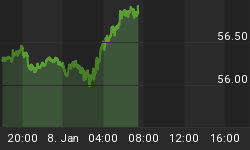Gold Falls as Stocks Drop, Low Summer Demand Faces Record Scrap-Supply
THE PRICE OF GOLD fell 1.1% to a 7-session low Monday lunchtime in London, dropping to $945 an ounce as European stock markets slipped back from Friday's new 10-month highs.
The US Dollar held flat on the currency markets, while crude oil traded down towards $70 per barrel.
Eurozone bond prices rose, pushing yields lower. Silver dropped 1.3% to $14.50 an ounce.
"Physical demand for gold may be heading for an improvement," says the latest Commodities Monthly from Standard Bank here in London, while "recent activity suggests that the Dollar may have more downside yet."
Noting how the US Treasury's most recent auctions of new government debt "were not really very encouraging", Standard also points to "a fuzzy Fed policy" towards ending its policy of Quantitative Easing.
"This uncertainty is likely to help to support Dollar-denominated Gold Prices," says the bank's commodity note, "and the $970 level should therefore be expected to give way eventually."
The Bank of England last week increased its program of quantitative easing from £125 billion to £175bn. The US Federal Reserve meets tomorrow and Wednesday to decide its monetary policy for the coming month.
Meantime however, "The gold market has certainly entered the quiet summer period," says one London dealer. "The industrial sector is on an extended holiday and demand is not expected to return until the end of August."
Traders acting for commercial gold-industry firms cut their bullish position in US Gold Futures to barely one long contract for every three bearish bets last week, new data showed late on Friday.
Speculative traders continued to extend their bullish position, in contrast, matching almost exactly the last month's 5% rise in US Dollar Gold Prices. As a group, hedge funds and other non-industry players ended last Tuesday holding more than 11 long bets on the gold market for every short contract they owned - a 17-month record in the bullish position held by Large Speculators.
On the supply side of the physical Gold Bullion market, "It's difficult to see how another record year for [gold] scrap can be avoided," says Philip Klapwijk, chairman of the GFMS consultancy. "But quite whether it reaches levels big enough to derail any price rally is a hard one to call.
"We could see a bit of a lull over the rest of the summer, but that still leaves us with plenty of potential for a fresh surge in scrap should the Gold Price start to get exciting again."
Over in the official sector, meanwhile - where 19 central banks on Friday renewed their Central Bank Gold Agreement to declare and limit annual sales for a further five years - gold lending continues to contract, GFMS says in a separate report, thanks both to falling demand for borrowed gold from the Gold Mining industry and also thanks to concerns over the solvency of potential borrowers.
Looking ahead, "The improving health of commercial banks should eventually lead to some greater willingness to lend on the part of central banks," says the research consultancy. "On the other hand, published leasing interest rates have dropped back to very unattractive levels."
The new Central Bank Gold Agreement - which states once again that "Gold remains an important element of global monetary reserves" and also offers to accommodate planned sales of 403 tonnes by the International Monetary Fund, recently approved by the US Congress - cuts the annual ceiling for gold sales by European states to 400 tonnes, the same limit as the original CBGA of September 1999.
The 2004 ceiling was set at 500 tonnes, but CBGA sales so far in the current year (ending Sept. 26) have totaled barely 140 tonnes. The April to July period saw "modest net purchases overall" by central banks worldwide according to analysis from Société Générale and GFMS.
"Gold's usefulness in [large investment] portfolios fluctuates according to the prevailing macroeconomic environment," says a detailed report from Swiss banking giant UBS.
"Gold has performed best when inflation, risk aversion and interest rates were rising and when the Dollar was depreciating in trend fashion. Gold returns were poor when economic and financial conditions were broadly stable."
The report from UBS - which has lost more than $34 billion since the global credit crisis began two years ago this month - suggests an "optimal long-term gold weight" of only 1% in large multi-asset portfolios.
















